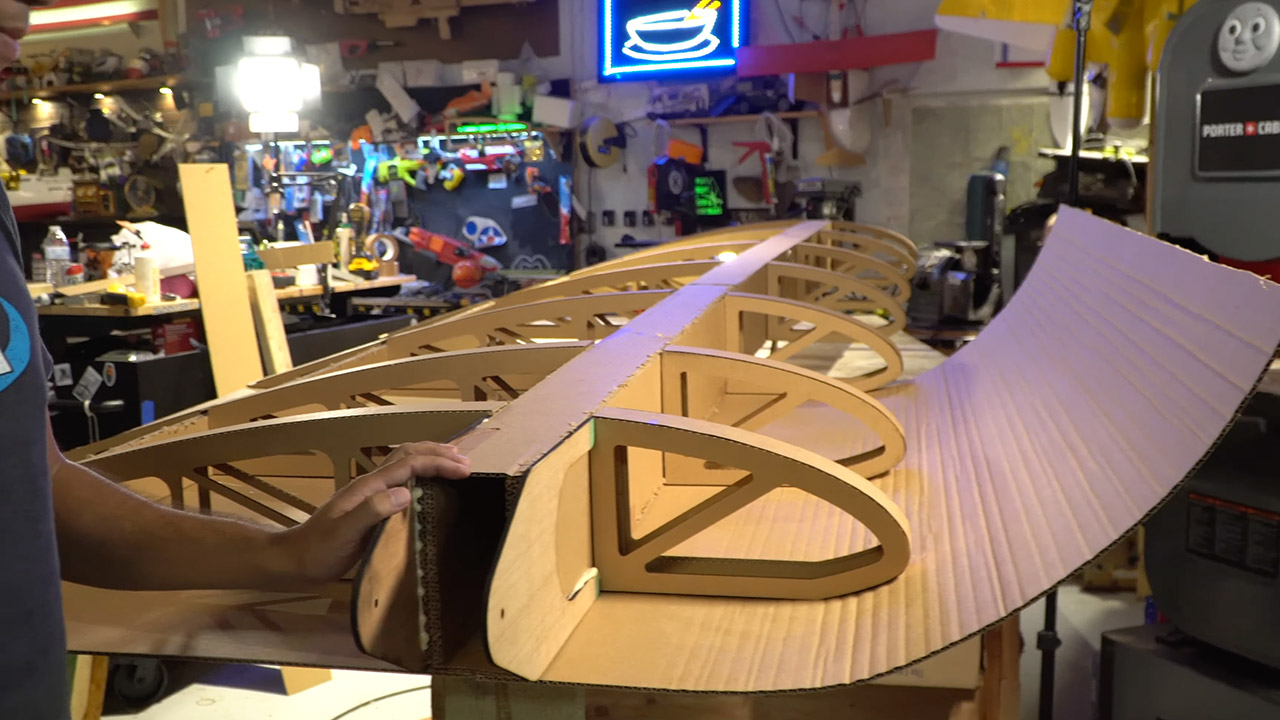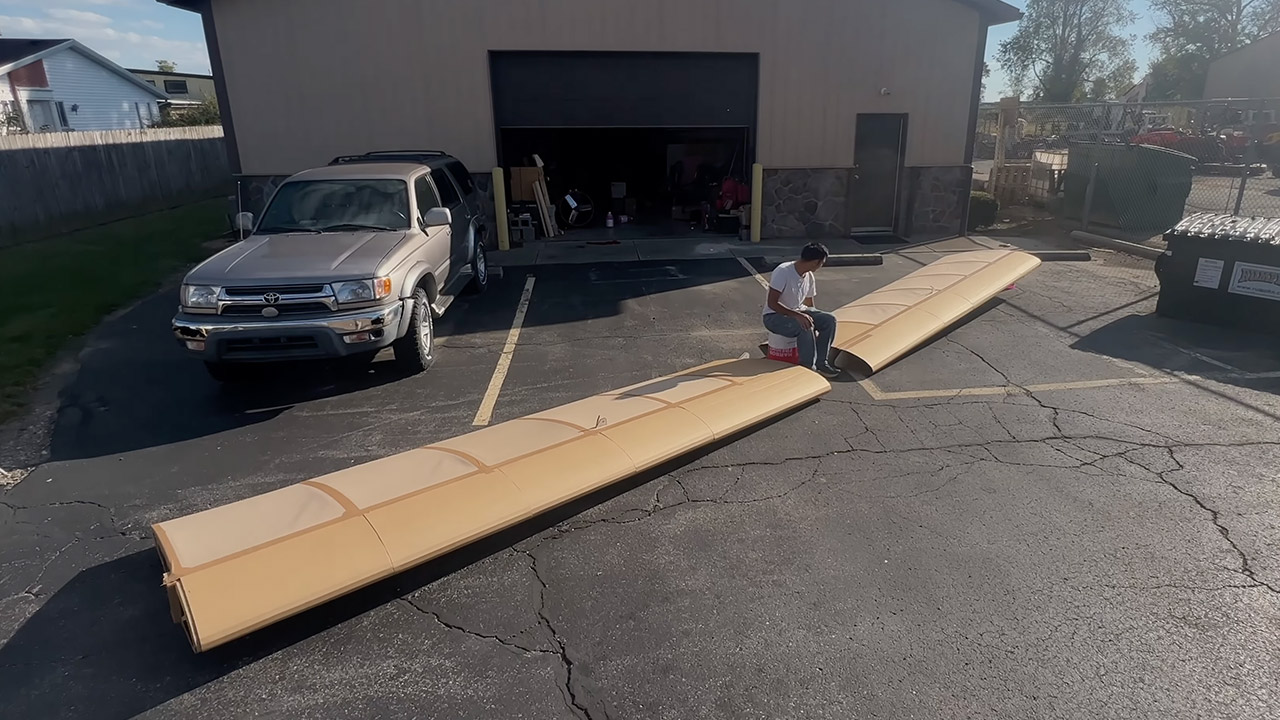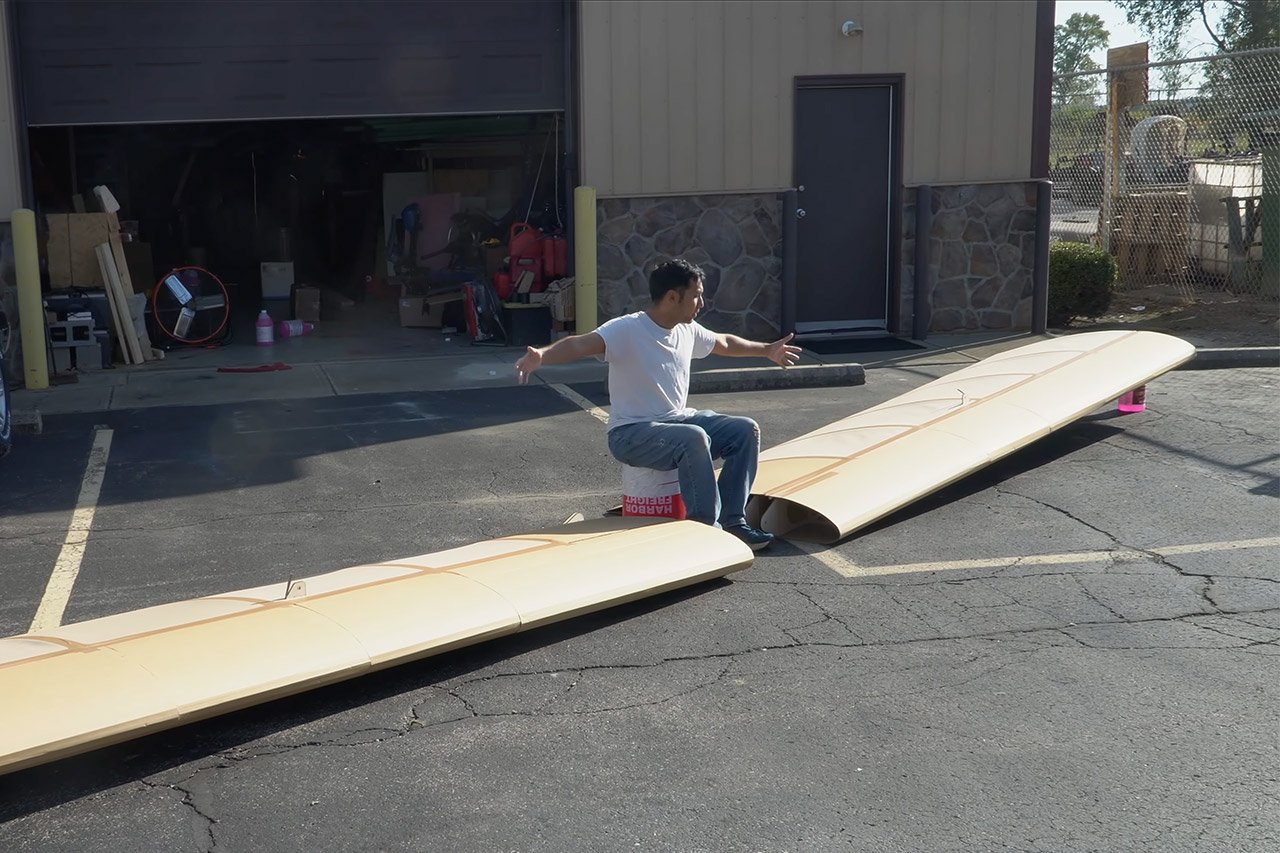Peter Sripol came up with a crazy concept, building an airplane wing out of cardboard. What he’s looking for is a working ultralight airplane wing that can lift off the ground, and he’s documented the entire process like a child on a sugar high.
Sripol starts by asking a simple question: can you slice cardboard to keep an airplane flying? So he dives into the details of cardboard, its structure. The flutes, he finds, are the wavy, corrugated layer sandwiched between two flat sheets of cardboard that gives it strength. Sripol tests three different flute arrangements: vertical flutes, horizontal flutes, and a combination of both. He rigs up a jury of cups of sand as weights and tests it out. Vertical flutes fold under pressure, horizontal flutes withstand vertical forces better, and a combination of both performs almost as well as horizontal flutes, giving the cardboard a decent balance of resistance to vertical and horizontal forces.

DJI Neo, Mini Drone with 4K UHD Camera for Adults, 135g Self Flying Drone that Follows You, Palm Takeoff,…
- Due to platform compatibility issue, the DJI Fly app has been removed from Google Play. DJI Neo must be activated in the DJI Fly App, to ensure a…
- Lightweight and Regulation Friendly – At just 135g, this drone with camera for adults 4K may be even lighter than your phone and does not require FAA…
- Palm Takeoff & Landing, Go Controller-Free [1] – Neo takes off from your hand with just a push of a button. The safe and easy operation of this drone…
With that settled, Sripol moves on to building the main spar of the wing, the backbone of any aircraft wing. He glues long strips of cardboard together, layering in the horizontal and vertical flutes to form a solid beam, and then tops it off with flat sheets for more rigidity. Things get a little hairy when one of the sheets warps from wet glue, a reminder of cardboard’s quirks. Undeterred, Sripol continues, knowing the first wing won’t be a showpiece, but a test subject for breakage. He makes some ribs out of laser-cut cardboard, adds doublers for more strength and slaps them together with hot glue, a move that raises many eyebrows in the aviation community.

The prototype wing is far from perfect, but Sripol shows he can work with what he has and turn a pile of packing material into an airplane part.When it comes to testing the prototype wing, things get real. Sripol adds weights to simulate flight loads. The wing performs well until the aft spar fails at around 200 pounds, or 2G for a fully loaded ultralight. Sripol identifies the weak point, redesigns the aft spar for the final wings, adds a piece of cardboard perpendicular to the spar to make an I-beam and increases compression resistance. This build, test, break, better process keeps you wondering how far he can push this material.

The final wings, which include lessons from the prototype, represent a step up in refinement. Sripol creates two wings, each with a reinforced I-beam spar and identical laser-cut ribs. To save weight, he skins them with butcher paper instead of heavy cardboard, which complements the cardboard aesthetic and shrinks when sprayed with water. The end product is two wings weighing 21.8 pounds apiece, which is heavier than the 14-16 pounds of an average ultralight wing but not bad for something constructed of glorified packing material. A final test at 150 pounds revealed that they scarcely deflected, giving Sripol confidence that they can handle a brief flight.
[Source]
